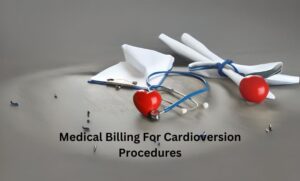CPT Code 58301 is a billing code used in the healthcare industry to document and bill for specific procedures related to the dilation and curettage (D&C) of the uterus. This code falls under the category of “Surgical Procedures on the Corpus Uteri,” as defined by the Current Procedural Terminology (CPT) code set maintained by the American Medical Association (AMA). In this article, we will delve into the details of CPT Code 58301, including its definition, indications, procedure details, coding guidelines, and considerations for medical billing.
Understanding Dilation and Curettage (D&C):
Before delving into the specifics of CPT Code 58301, it’s essential to understand the procedure it represents. Dilation and curettage, commonly abbreviated as D&C, is a surgical procedure performed to diagnose or treat various gynecological conditions affecting the uterus. The procedure involves two main steps: dilation of the cervix to access the uterine cavity and curettage, which is the scraping or removal of tissue from the uterine lining.
Indications for Dilation and Curettage (D&C):
- Diagnostic purposes:
- Evaluation of abnormal uterine bleeding (AUB)
- Assessment of uterine abnormalities, such as polyps, fibroids, or endometrial hyperplasia
- Investigation of suspected pregnancy complications, such as miscarriage or ectopic pregnancy
- Sampling of endometrial tissue for histological analysis in cases of abnormal Pap smears or endometrial cancer screening
- Therapeutic purposes:
- Treatment of incomplete miscarriage or retained products of conception (RPOC)
- Management of heavy menstrual bleeding (menorrhagia) refractory to medical therapy
- Removal of uterine polyps or fibroids causing symptoms such as abnormal bleeding or pelvic pain
Procedure Details for CPT Code 58301:
CPT Code 58301 specifically refers to the dilation and curettage procedure performed for diagnostic and/or therapeutic purposes. The procedure typically involves the following steps:
- Patient Preparation:
- The patient is positioned on the examination table, usually in the lithotomy position, with the feet supported in stirrups.
- Anesthesia or sedation may be administered to ensure patient comfort during the procedure.
- Cervical Dilation:
- The cervix is dilated using mechanical dilators or pharmacological agents to facilitate access to the uterine cavity.
- Gradual dilation of the cervix allows for safe passage of instruments into the uterus without causing injury or trauma.
- Uterine Curettage:
- Once the cervix is sufficiently dilated, a curette or similar instrument is introduced into the uterine cavity.
- The uterine lining (endometrium) is gently scraped or suctioned to obtain tissue samples for diagnostic purposes or to remove abnormal tissue.
- Hemostasis and Closure:
- Hemostasis achieved by applying pressure, electrocautery, or other hemostatic techniques to control bleeding from the uterine lining.
- The cervix may leave to spontaneously close or may sutured if necessary, depending on the physician’s preference and the patient’s clinical condition.
Coding Guidelines for CPT Code 58301:
When reporting CPT Code 58301 for dilation and curettage procedures, it’s important to adhere to the following coding guidelines:
- Use of Modifier -51:
- If multiple procedures performed during the same operative session, modifier -51 (Multiple Procedures) should appended to indicate that additional procedures performed.
- This modifier informs payers that certain procedural components may bundled together for reimbursement purposes.
- Documentation of Medical Necessity:
- Ensure that the medical record clearly documents the indications for the dilation and curettage procedure, including relevant clinical findings, symptoms, diagnostic tests, and treatment rationale.
- Medical necessity documentation supports the appropriateness of the procedure and facilitates reimbursement from insurance payers.
Considerations for Medical Billing:
In addition to proper coding, medical billing for dilation and curettage procedures (CPT Code 58301) requires attention to various billing considerations, including:
- Insurance Coverage Verification:
- Verify the patient’s insurance coverage and benefits for surgical procedures, including any preauthorization requirements or coverage limitations.
- Communicate with the patient regarding their financial responsibility, including copayments, deductibles, and out-of-pocket expenses.
- Claim Submission and Coding Accuracy:
- Ensure accurate coding of the dilation and curettage procedure (CPT Code 58301). On the insurance claim form, along with any applicable modifiers and diagnosis codes.
- Submit the claim electronically or by mail according to the payer’s requirements, including all necessary supporting documentation and attachments.
- Timely Follow-Up and Appeals:
- Monitor claim status and follow up promptly on any denied, rejected, or pending claims to address coding errors, documentation deficiencies, or other issues.
- If necessary, initiate the appeals process to challenge claim denials or seek reconsideration of reimbursement decisions from insurance payers.
Also Read:
CPT Code 76856
CPT Code 92507
77338 CPT Code
Conclusion:
CPT Code 58301 plays a crucial role in documenting and billing for dilation and curettage procedures performed for diagnostic and/or therapeutic purposes in gynecological practice. Understanding the indications, procedure details, coding guidelines, and billing considerations. Associated with this code is essential for healthcare providers, medical coders, and billing specialists involved in gynecological care and medical billing processes.
By adhering to best practices and guidelines, healthcare professionals can ensure accurate coding, appropriate reimbursement, and optimal patient care outcomes for individuals undergoing dilation and curettage procedures.









